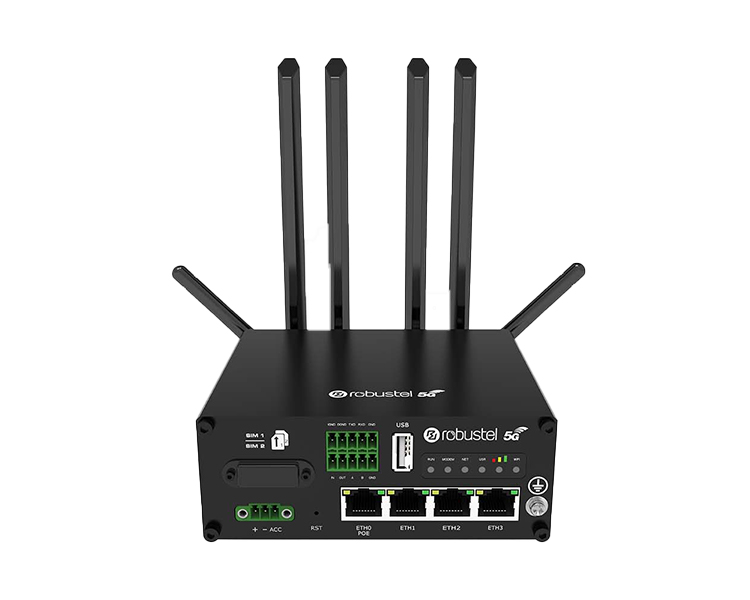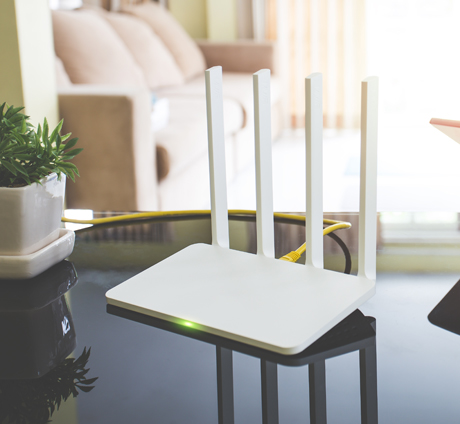A good router will provide you with a strong, reliable wireless internet connection by connecting to a modem, which in turn connects to your ISP (Internet Service Provider). Routers can connect to either a fixed line internet connection or a mobile solution such as 4G and 5G sim service. So what are some of the main things should you consider when getting a new router? Take a look at the list below to find out.
5G Routers
5G is the latest and fastest global wireless standard, following on from 1G, 2G, 3G and of course 4G. The speeds delivered by 5G will surpass those by traditional home broadband in many areas, offering ultra-low latency, higher reliability and increased network capacity.
5G routers use this latest technology to provide businesses, homes, events and remote locations with super-fast speeds for many users and devices at a time. As 5G technology continues to roll out across the UK and the world, more routers and SIM card options will become available. We are delighted to offer a growing portfolio of 5G routers from quality brands including Peplink, Robustel, Cradlepoint and more.
5G will offer huge potential to the growing network of devices and objects connected to the web, known as the Internet of Things. The IoT describes physical objects that are embedded with sensors, processing ability, software, and other technologies. All of these devices can connect and exchange data with other devices and systems over the Internet or other communications networks. It is guaranteed that 5G will enable the Internet of Things to become more innovative, efficient and integrated into our daily lives.


Bonding / Load Balance Routers
Bonding Routers combine multiple connections / lines together to provide your network with a single outgoing connection. For example, if you have two ADSL Broadband connections each running at 10Mbps downstream, 1Mbps upstream, then the bonded performance will be up to 20Mbps downstream, 2Mbps upstream (give or take a minor overhead loss).
Bonding is becoming increasingly popular since a single ADSL connection is often not fast or reliable enough for many businesses, who have traditionally used expensive leased line connections. However, by bonding multiple ADSL connections, you may achieve your required bandwidth and reliability for a fraction of the cost of a leased line.
Bonding is a service, and typically requires a server (either self-hosted, or purchased as a service) to re-aggregate the broken down data.
Load balancing is where two or more connections (including, but not limited to: ADSL, ADSL2+, FTTC, satellite, cellular) are connected to a dedicated load-balancing router, provided they are either directly connected or embedded (Internal SIM slot / USB / WAN).
A load-balancing router will route Internet traffic optimally across two or more internet connections to deliver a better experience to broadband users simultaneously accessing Internet applications. Within higher spec routers, you can specify routing algorithms, to favour certain applications, such as: streaming, guest hotspot, specific MAC address as well as VOIP traffic + more.
Broadband Routers
Broadband routers usually have integrated modems and are designed to work on a wired broadband connection, for example ADSL and cable. If you have multiple users using your Internet service at the same time, Broadband routers are the ideal choice as it allows everyone to enjoy high-end Internet functions like streaming video and audio.
Sharing files, printers and other peripherals, most broadband routers also provide a much safer internet connection with built-in firewall security preventing unauthorised access of your network from the Internet.
Ethernet routers are designed to be used with any broadband connection which is presented to you as an Ethernet port; in these cases, your ISP usually provides a separate pre-configured modem to convert the broadband connection into an ethernet connection the router accepts. Ethernet routers can work with other ISP connection types, for example Satellite, and WiFi. If you have broadband delivered via a phone line, you will typically use ADSL/VDSL Wireless Routers instead.


